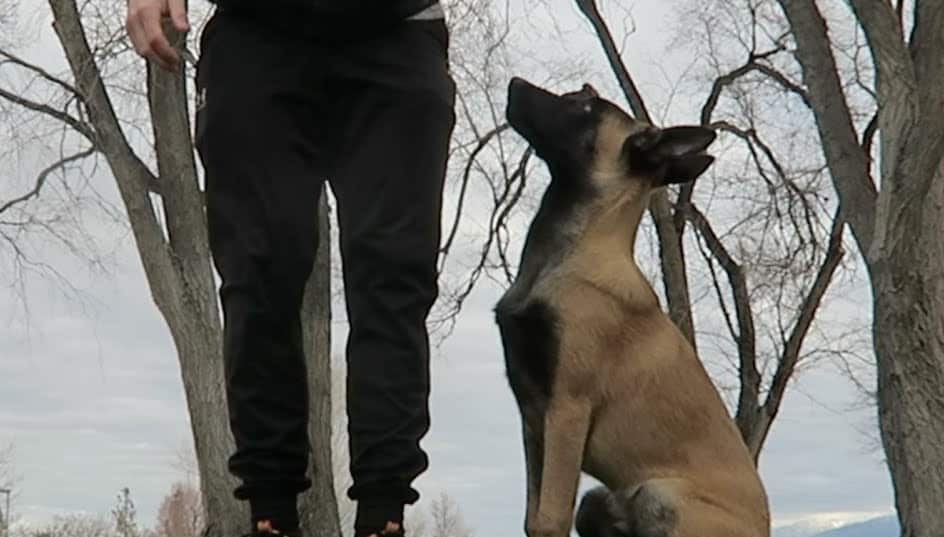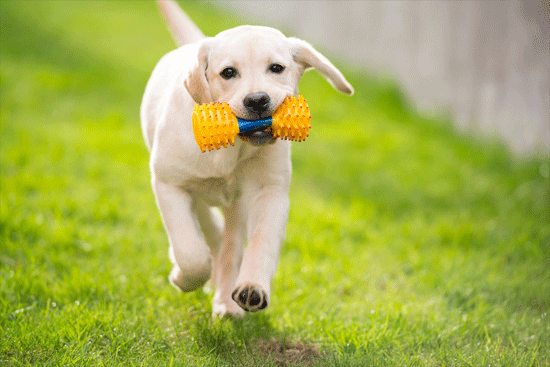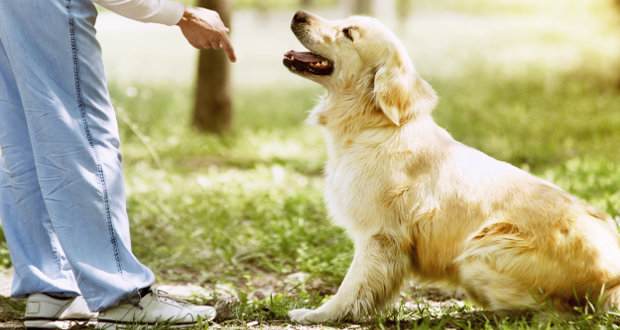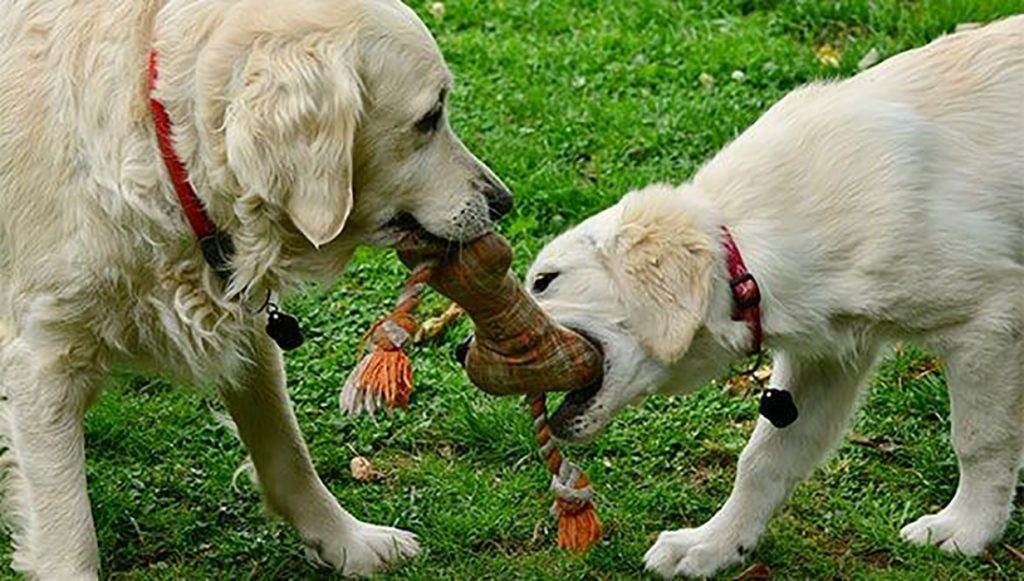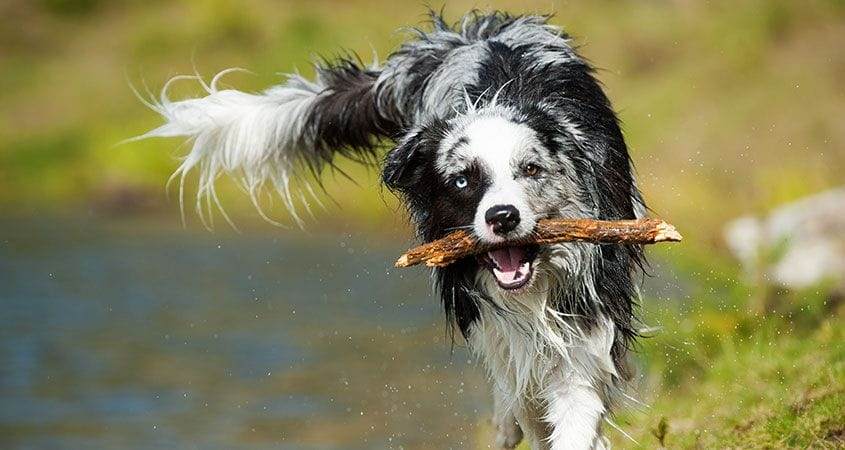Retrievers are one of the gun dogs that have an excellent ability to retrieve preys. As they are loyal, training them for hunting, sports will be better as they are better companions for hunting. They have a good temper and loyalty of these dogs are beyond questionable that is what make these dogs more suitable. A 4 -6 month old dog is ready to start his formal training. Before training, it is important for your dog to be properly socialized because it will increase their confidence.
Gun dogs have outstanding capability of locating prey and recovering them. Before training your retriever for hunting, he must be well versed with the command of ‘PLACE’. Before the training starts, you should keep in mind that the retrievers are pretty much attached to us. They mostly work on getting back to us, but for hunting we have to train them in getting away from us. So the first sessions will be difficult. Any type of dog training has to start with something simple and should be tried with a leash. Progressive repetition gives perfect clarity in training.
When to begin the training?
Training of a puppy can be started at early ages say, about 8 weeks old but for older ones about 6 months old is the best stage to start training. It is said that this period is more crucial one as the dog is more open to learning at this stage. In this period he grasps everything much faster and quickly acquires new tricks and tasks. But at this stage all the behavioral problems in dogs come in act. But for younger pup of 8 weeks old the following requirements are essential before starting the training.
- In-depth socialization and making him insensitive to various surroundings and sounds. Sound introduction should start from feebler to louder ones. Because when you introduce more loud sounds the dog becomes frantic
- Climbing lessons should be given first before training them to hop on the raised platforms.
- Keeping steadiness and sense of calm min to all kind of distractions.
- Puppy should not be trained for running long distances before attaining 6 month old because their leg bones are not properly or fully developed. Possibility of joint issues can happen if the pup run for longer distances or trained harder
- Puppies have possible issues with retrieving so they should not be trained hard for it. They will acquire the fetch task when they attain puberty.
Steps for training retrievers for hunting stands:

The training for hunting stands is simple but everything needs to be repeated to get your dog clarity of what he should be doing. The following steps are generally followed in the training for hunting stands.
Step 1: ‘PLACE’ and ‘STAY’ on ground
As stated earlier, your dog should be trained well on the command of ‘PLACE’ before the hunting stand training begins. Even though they are completely trained on ‘PLACE’ command, the training should begin with leash and collar. Because with the leash and collar, you get added control over your dog and it ensures that he observes it. Place a flat platform on the ground considerably closer to dog’s position.
You have to position yourself halfway between the dog and the platform. Point to the platform and command ‘PLACE’. Give your dog a treat for so that he gets that getting up there means food, so he likes that. The trainer should start moving and ensures that he doesn’t get off the platform. Train him to place and stay there. While sitting on the platform, he should be facing you. Rewarding them with a treat is the best way to make them learn.
Step 2: Raised platform
To begin to try a platform or stand raised at about 6 or 5 inches (12.7 cm) from the ground. In selecting the stand you have to be careful about the stability of the stand because if the stand is not stable your dog will not try it later. If it is stable, he will realize that there is no danger, and he will trust you. If the stand you have is not stable enough then built a raised stand or try purchasing the standard models available in the market.
You can use any command to make him jump on the stand, but make it less complicated for the dog. Using the same ‘PLACE’ command will be best. Ask your dog to stand on the platform by just pointing to the stand and using the command of ‘PLACE’. If your retriever hangs back, put a pressure on the leash till he gets up. If he does not sit down, just continue applying pressure in the upward direction.
Sometimes the retriever doesn’t get up on the stand, it may be because a sense of danger in the dog’s mind about the new platform. So we have to make him understand that there is no issue with the platform. So you have to pick him up and put him on the stand. Once he perceives that there are no issues with the platform, it won’t take much time for getting him there.
Step 3: Holding in position
Holding in position is very easy if your dog is 100% on the command ‘STAY’. The commands ‘STAY’ have different thoughts on some people. Some of us uses it to make their dog to continue the last given command until they are freed. Other people use this command to make their dog to believe that he has to stay there for a bit. Holding them for longer periods takes a lot of time yet achievable.
Before moving to holding them in position we must first learn how to keep them steady. Give a ‘SIT’ command and toss a bumper. If the retriever moves catch him and bring him back and repeat the process until the dog is calm and focused. As the dog progresses throw the bumper to a much longer distance. Once the dog understands the concept, tie the leash to a closer object but don’t put excess slack on the leash. If the dog moves pick the bumper and start over. If he is calm take the leash off but have a control over him. Because if he breaks the calmness we will have to control him.
Extended periods of making him stay will start from lesser periods to longer ones. For the first sessions make them stay for seconds, then slowly increase the time. Firstly a few seconds would suffice, then make it a minute and go on. If you could train your dog to stay for a minute in 2-3 days, then it will be a greater accomplishment.
When the time for him to get down has come to throw something for him to retrieve. He will realize it as the reward for sitting this longer. While extending the time period you always have to keep in mind that never always choose a specific time for longer periods else he will get angry so change the time accordingly. Sometimes keep him for longer periods say a 7 to 9 minutes and for shorter periods such as 2 to 3 minutes.
Step 4: Increasing the distance
Once your dog responds quickly to ‘PLACE’ and climbs up the stand we have to move to the next level of training While training in this session it’s better to replace the existing leash with a leash of much larger length say a 40 or 50 foot Firstly make some distancing with your position and his position by moving away from the dog and stand Make your retriever to do the same and make him move away from the stand so that he has to travel farther to climb on it.
Gradually change the distances from the dog and stand. Once he gets comfortable with much larger distance, lets provide him with some obstructions on his path. The obstructions maybe some toys or decoys and train him with these to ensure that he doesn’t get distracted by these.
Step 5: Increasing the height
Best time to practice this step is from the second or third day of drill. Increase the platform height to about 11 or 17 inches. An older dog can step on this height without any problem but for younger one’s a little push may be needed. Keep raising the height as your retriever progresses. You have to give him time. Some dog advances faster while others may be reluctant in the first time so you have to be patient.
Step 6: Hunting stimulants
Triggering hunting circumstances is the final step for hunting stands. Mostly everyone forgets about this step but this is the most important part in the training of hunting stands. In this step you will need supplies and help of a friend or an assistant. Sound signalling objects such as duck calls, whistles or pistols will be needed and for retrieving you need some decoys if you can get hold of dead animals it will be a plus. Command your dog to place on the stand and let him stay there for a minute and blow the whistle or duck calls.
When you blow the whistle simultaneously your friend or assistant have to throw the decoy. Train him to get that this is the signal to relieve him from the ‘STAY’ position and to retrieve the decoy. The duck call often provides some excitement to your retriever. To avoid this try it with leash and collar. When he gets off the position before the blow you have to call him back and continue the process until he gets it.
Key points to be noted during training:
In training programs, you have to keep in mind certain things or should have the following things to be ensured before moving into training procedures and while executing training.
- In every training procedure before training the retrievers, you have to make them obedient and steady. At first when you keep him on the stand he won’t stay for a bit. Make it easy on him in the first sessions later on make him stay for few seconds. Progressively repeat the procedure with extended time he will develops a calm mind.
- Positively and quickly reacting to command is an important aspect of an obedient dog. If he is obedient in terms of any kind of distractions then he may be called a well trained dog. A well trained dog obeying the commands such as sit, place, stay and heel will do anything we want.
- While using a dog collar the trainer should have a thorough knowledge about it. It should always be kept in mind that if you want to train them with electric collars you must be capable of training without it. Use of electric collars has possible chances of ending up with dog abuses.
- Hyper active dogs are quite difficult for the quick start of hunting stand trainings. For such cases you can rely on electric collars.
Conclusion
Training for hunting stands requires a sufficient age of mature in case of dogs so it’s better to start training at the age of 6 months. Well training is required in the case of hunting stands. At the starting session of training staying in position should be on the ground itself. In the ground training itself it is better to train the dog to stay in position, so he will get glimpse of staying in position at elevated stands.
While keeping him in the ground, you should move away from the dog just to ensure that he moves from the position only on commands. While holding him ensures that, he is looking at you to make sure that he is focused. Make him mount on elevated stands but with much lesser heights. After he has excelled in climbing the lesser height increase the distance between the dog and the stands provided with obstructions. Raise the stand to much higher levels and later train him in created hunting environments.
Table of Contents

